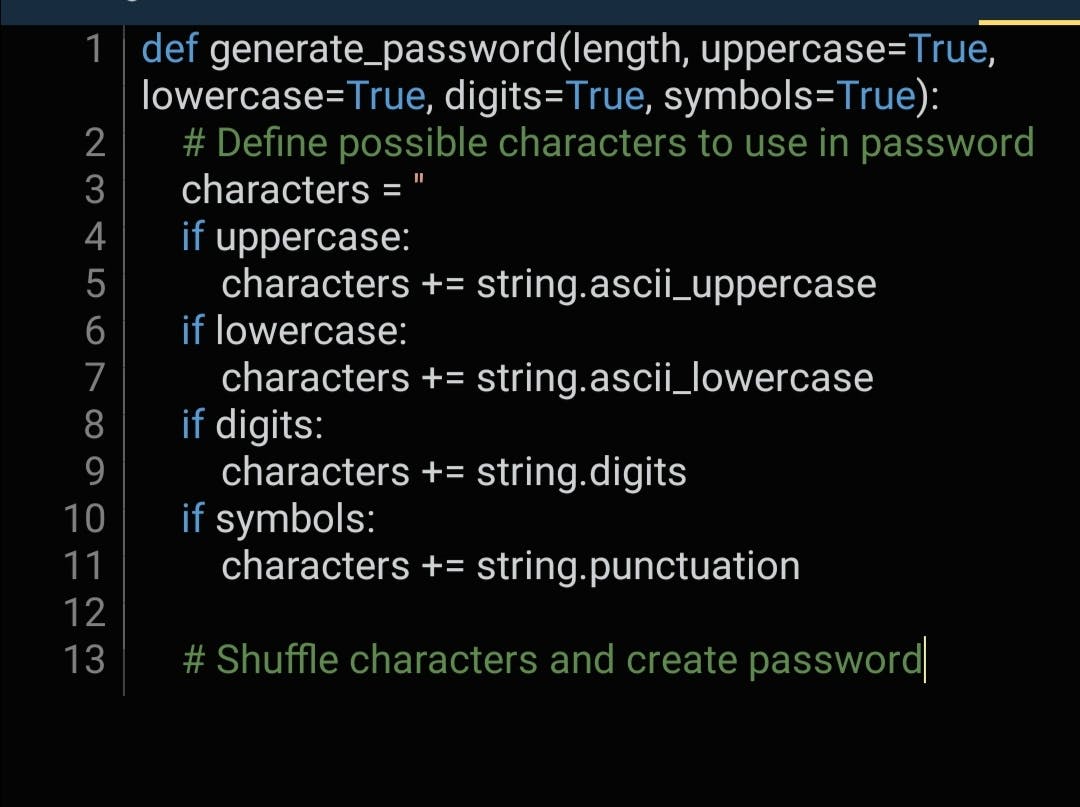As we continue to rely more and more on the internet for our daily activities, it has become increasingly important to use strong, unique passwords to protect our online accounts. However, coming up with secure passwords can be a daunting task, especially if we need to create multiple passwords for different accounts. Fortunately, Python provides a powerful and flexible tool for generating strong, random passwords that are difficult to crack. In this article, we will walk you through the process of building a password generator in Python.
Step 1: Define Password Requirements
Before we can start coding our password generator, we need to determine what makes a password strong and what our generator should be capable of. Some common password requirements include:
Minimum length
Use of uppercase and lowercase letters
Use of numbers and/or symbols
Avoidance of common words or patterns
For this example, we will aim to create a password that is at least 12 characters long and contains a mix of uppercase and lowercase letters, numbers, and symbols.
Step 2: Import Required Libraries
To generate a random password, we will need to use Python's built-in random library. We will also use the string library to get a string of all possible characters we want to include in our password. Here is the code to import these libraries:

Step 3: Define Password Generator Function
Now that we have defined our password requirements and imported the necessary libraries, we can start coding our password generator. We will create a function that takes a password length as input and returns a random password that meets our requirements. Here is the code for the function:

Let's break down what is happening in this function:
First, we define a string of all possible characters to use in our password. We use string.ascii_letters to get all uppercase and lowercase letters, string.digits to get all digits, and string.punctuation to get all symbols.
Next, we use Python's random.sample() function to shuffle the characters and select a random subset of the desired length.
Finally, we return the generated password.
Step 4: Test Password Generator
Now that we have defined our password generator function, we can test it to make sure it meets our requirements. Here is an example of how to use the function to generate a password with a length of 12:

When we run this code, we should see a randomly generated password that is 12 characters long and contains a mix of uppercase and lowercase letters, numbers, and symbols.
Step 5: Enhance Password Generator
While our password generator function works as intended, we can enhance it further by adding more options for generating passwords. For example, we could add a parameter to specify whether the password should include uppercase and lowercase letters, numbers, and/or symbols. Here is an updated version of our function with additional parameters:

You can try it, I'd love to see yours in the comments!

